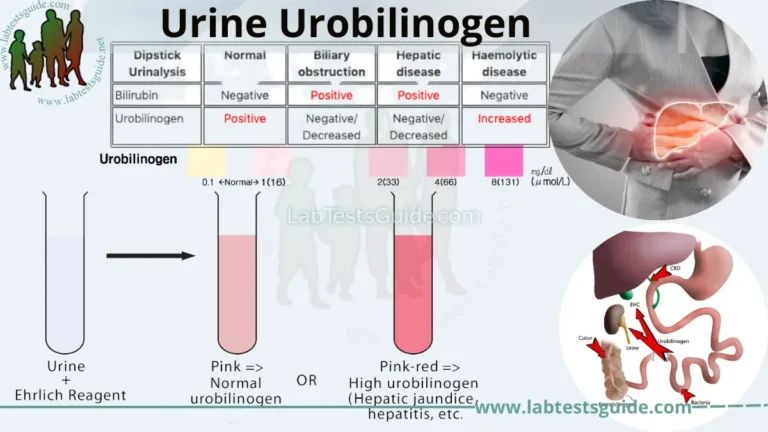Anaerobic Blood Agar is a type of culture medium used to grow anaerobic bacteria, which are microorganisms that can grow in the absence of oxygen. The medium is typically made by adding blood (usually sheep or horse) to a base agar medium and then incubating the culture under anaerobic conditions, typically in a special container with an atmosphere of gases like Nitrogen, Carbon dioxide and hydrogen which creates an anaerobic environment. The blood in the medium provides a source of nutrients for the bacteria, and the agar acts as a solidifying agent. The medium can be used to isolate and identify anaerobic bacteria from various clinical specimens and can also be used for antimicrobial susceptibility testing.

What is Anaerobic Blood Agar ?
Anaerobic Blood Agar is a type of growth medium that is used to culture bacteria under anaerobic conditions. It is a nutrient-rich medium that contains blood, which provides the necessary growth factors for the bacteria. The agar is supplemented with reducing agents, such as cysteine or thioglycolate, which help to create an anaerobic environment.
Anaerobic Blood Agar is commonly used to culture anaerobic bacteria, which are bacteria that require an oxygen-free environment to grow. These bacteria can be difficult to culture using traditional methods, as exposure to oxygen can be lethal to them. Anaerobic Blood Agar allows these bacteria to grow in a controlled environment, allowing for the isolation and identification of anaerobic species.
Anaerobic Blood Agar is used in clinical microbiology to diagnose infections caused by anaerobic bacteria, such as those that cause abscesses or sepsis. It is also used in research to study the physiology and metabolism of anaerobic bacteria.
Purpose of Anaerobic Blood Agar
Here is a list of purposes of Anaerobic Blood Agar:
- To provide a growth medium that supports the growth of anaerobic bacteria, which are bacteria that require an oxygen-free environment to grow.
- To create a controlled environment that allows for the isolation and identification of anaerobic bacteria, which can be difficult to culture using traditional methods.
- To diagnose infections caused by anaerobic bacteria, such as those that cause abscesses or sepsis.
- To study the physiology and metabolism of anaerobic bacteria in research settings.
- To develop strategies for the control and treatment of anaerobic bacterial infections.
- To support the growth of fastidious anaerobic bacteria that require specialized growth conditions to grow.
- To differentiate between aerobic and anaerobic bacteria, as Anaerobic Blood Agar is selective and supports the growth of anaerobic bacteria while inhibiting the growth of aerobic or facultative bacteria that can grow in the presence of oxygen.
- To prepare pure cultures of anaerobic bacteria for use in various applications, including industrial and biotechnological processes.
Principle of Anaerobic Blood Agar:
The principle of Anaerobic Blood Agar is to provide a growth medium that supports the growth of anaerobic bacteria, which are bacteria that require an oxygen-free environment to grow. Anaerobic Blood Agar is a type of nutrient-rich agar that contains blood, which provides the necessary growth factors for the bacteria. The agar is supplemented with reducing agents, such as cysteine or thioglycolate, which help to create an anaerobic environment by removing any residual oxygen.
The reducing agents in Anaerobic Blood Agar react with any residual oxygen present in the medium, forming water and other by-products that do not interfere with the growth of anaerobic bacteria. By creating an anaerobic environment, Anaerobic Blood Agar allows for the growth of anaerobic bacteria that would otherwise be inhibited or killed by exposure to oxygen.
Anaerobic Blood Agar is also selective in that it supports the growth of anaerobic bacteria while inhibiting the growth of aerobic or facultative bacteria that can grow in the presence of oxygen. This selectivity is achieved by the addition of certain antibiotics, such as kanamycin or vancomycin, to the medium.
Overall, the principle of Anaerobic Blood Agar is to create a specialized growth medium that supports the growth of anaerobic bacteria and enables their isolation and identification.
Composition of Anaerobic Blood Agar:
The composition of Anaerobic Blood Agar may vary slightly depending on the manufacturer or purpose, but generally, it contains the following components:
| Ingredients | Gms/liter |
|---|---|
| Casein enzymic hydrolysate | 15.0 |
| Papaic digest of soybean meal | 5.0 |
| Yeast extract | 5.0 |
| Sodium chloride | 5.0 |
| L-Cysteine | 0.50 |
| Hemin | 0.005 |
| Agar | 13.50 |
- Peptones: A mixture of enzymatically digested animal and plant proteins that provide a source of amino acids and other nutrients for bacterial growth.
- Agar: A solidifying agent that provides a gel-like matrix for bacterial growth.
- Beef extract: A source of essential nutrients and vitamins for bacterial growth.
- Sodium chloride: A salt that provides osmotic balance and helps maintain the integrity of the bacterial cell membrane.
- Sheep or horse blood: Provides nutrients and growth factors for bacterial growth and can aid in the differentiation of different bacterial species based on hemolysis patterns.
- Reducing agents: Such as cysteine or thioglycolate, to create an anaerobic environment by removing any residual oxygen.
- Antibiotics: Such as kanamycin or vancomycin, to inhibit the growth of aerobic or facultative bacteria that can grow in the presence of oxygen.
The exact composition of Anaerobic Blood Agar may also be modified to support the growth of specific types of anaerobic bacteria, depending on the application or research goals.
Preparation of Anaerobic Blood Agar:
The preparation of Anaerobic Blood Agar involves the following steps:
- Weigh 44.0 Grams of above items and dissolve them in 1000 ml of distilled water by heating and stirring until they are completely dissolved.
- Adjust the pH of the solution to around 7.4 using a pH meter or pH paper.
- Sterilize the solution by autoclaving at 15 lbs pressure at 121°C for 15 minutes.
- Allow the solution to cool to around 50°C before adding the blood. The blood should be added in a sterile environment to avoid contamination.
- Mix the blood and the solution thoroughly and pour the mixture into sterile Petri dishes.
- Allow the plates to cool and solidify before adding the reducing agent, such as cysteine or thioglycolate, to the medium.
- Sterilize the reducing agent by filtration using a 0.22-micron filter.
- Add the reducing agent to the medium, either by pouring it over the surface of the medium or by injecting it into the medium using a syringe.
- Mix the reducing agent and the medium thoroughly by swirling the plates gently.
- Allow the plates to cool and solidify completely before storing them in a sealed container at 2-8°C until use.
Note: The exact composition and preparation methods may vary depending on the manufacturer or purpose. It is important to follow the instructions provided by the manufacturer for optimal results.
Result Interpretation of Anaerobic Blood Agar:
| Organisms | Growth |
| Bacteroides fragilis | Luxuriant Growth |
| Bacteroides melaninogenicus | Luxuriant Growth |
| Peptostreptococcus anaerobius | Luxuriant Growth |
| Clostridium perfringens | Growth, double zone β-hemolysis |
| Fusobacterium nucleatum | Growth |
| Prevotella melaninogenica | Growth; pigment (tan to brown) |
| Escherichia coli | Growth |
| Staphylococcus aureus | Growth |
Interpretation of results from anaerobic blood agar plates is based on the growth and appearance of colonies.
- No growth – If there is no growth on the anaerobic blood agar plate, it indicates that the sample did not contain any anaerobic microorganisms or the microorganisms present in the sample were unable to grow under the conditions provided by the medium.
- Growth of anaerobic bacteria – The presence of colonies on the anaerobic blood agar plate indicates the growth of anaerobic bacteria. The colony morphology and color can provide clues to the identity of the microorganism. Some common anaerobic bacteria that may grow on anaerobic blood agar include Bacteroides spp., Clostridium spp., and Prevotella spp.
- Growth of aerobic or facultative bacteria – If there is growth on the anaerobic blood agar plate but the colonies are not typical of anaerobic bacteria, it may indicate the growth of aerobic or facultative bacteria that were able to grow under the microaerophilic conditions provided by the reducing agent in the medium.
- Hemolysis – The hemolysis pattern of the colonies can also provide information about the microorganism. For example, alpha-hemolytic colonies indicate partial hemolysis of red blood cells, while beta-hemolytic colonies indicate complete hemolysis.
It is important to note that anaerobic blood agar is a non-selective medium, which means that it can support the growth of a wide range of microorganisms, including contaminants. Therefore, the results from anaerobic blood agar plates should be interpreted in conjunction with other laboratory tests and clinical information to make an accurate diagnosis.
Uses of Anaerobic Blood Agar:
Anaerobic blood agar is a common and versatile microbiological medium that has various uses in laboratory settings. Some of the uses of anaerobic blood agar are:
- Detection and isolation of anaerobic bacteria – Anaerobic blood agar is used to culture and isolate anaerobic bacteria from clinical specimens such as blood, abscesses, and other body fluids.
- Antibiotic susceptibility testing – Anaerobic blood agar is used in the antibiotic susceptibility testing of anaerobic bacteria.
- Identification of anaerobic bacteria – The morphology and hemolytic pattern of colonies grown on anaerobic blood agar can help identify anaerobic bacteria to the genus and species level.
- Evaluation of the anaerobic environment – Anaerobic blood agar is used to assess the effectiveness of different anaerobic incubation methods and equipment.
- Research – Anaerobic blood agar is used in microbiological research for the study of anaerobic bacteria and their interactions with other microorganisms.
- Industrial applications – Anaerobic blood agar is used in industrial microbiology for the production of various products such as enzymes, antibiotics, and biopolymers.
Overall, the high nutrient content of anaerobic blood agar makes it a suitable medium for the growth of a wide variety of microorganisms, and its use is essential for the detection and identification of anaerobic bacteria in clinical and research settings.
Limitations of Anaerobic Blood Agar:
Like any laboratory medium, anaerobic blood agar has certain limitations that must be considered when interpreting results and making diagnostic decisions. Some of the limitations of anaerobic blood agar include:
- Lack of selectivity – Anaerobic blood agar is a non-selective medium, which means that it supports the growth of a wide range of microorganisms, including contaminants. Therefore, the presence of growth on anaerobic blood agar does not necessarily indicate the presence of clinically significant anaerobic bacteria.
- Variability in composition – The composition of anaerobic blood agar may vary depending on the manufacturer or preparation method, which can affect the growth and recovery of anaerobic bacteria.
- Sensitivity to oxygen – Although anaerobic blood agar is designed to support the growth of anaerobic bacteria, it is not completely oxygen-free, and exposure to oxygen can affect the growth of some anaerobic bacteria.
- Limited shelf life – Anaerobic blood agar has a limited shelf life and may become contaminated or degrade over time, which can affect the growth of microorganisms and the reliability of results.
- Cost and time-consuming – Anaerobic blood agar can be more expensive and time-consuming to prepare and use compared to other laboratory media, and may require specialized equipment and techniques for anaerobic incubation.
Overall, while anaerobic blood agar is a valuable tool for the detection and isolation of anaerobic bacteria, it should be used in conjunction with other laboratory tests and clinical information to make an accurate diagnosis.
FAQs:
What is anaerobic blood agar used for?
Anaerobic blood agar is used for the detection, isolation, and identification of anaerobic bacteria from clinical specimens.
How is anaerobic blood agar prepared?
Anaerobic blood agar is prepared by adding sterile defibrinated sheep or horse blood to a nutrient agar base under anaerobic conditions.
What is the composition of anaerobic blood agar?
The composition of anaerobic blood agar typically includes peptone, beef extract, yeast extract, and agar, with the addition of sterile defibrinated sheep or horse blood.
What is the principle of anaerobic blood agar?
The principle of anaerobic blood agar is to provide a nutrient-rich, oxygen-free environment that supports the growth of anaerobic bacteria.
What are the limitations of anaerobic blood agar?
Some of the limitations of anaerobic blood agar include its lack of selectivity, variability in composition, sensitivity to oxygen, limited shelf life, and cost.
Can aerobic bacteria grow on anaerobic blood agar?
Yes, aerobic bacteria can grow on anaerobic blood agar, but anaerobic bacteria typically grow more abundantly under anaerobic conditions.
What is the difference between anaerobic and aerobic bacteria?
Anaerobic bacteria do not require oxygen to grow, while aerobic bacteria require oxygen for growth.
What is the difference between anaerobic blood agar and MacConkey agar?
Anaerobic blood agar is used for the detection and isolation of anaerobic bacteria, while MacConkey agar is used for the isolation and differentiation of gram-negative bacteria, particularly enteric organisms.
How do you interpret the results from anaerobic blood agar plates?
The results from anaerobic blood agar plates are interpreted based on the morphology, size, color, and hemolytic pattern of the colonies, as well as biochemical tests and clinical information.
Can anaerobic bacteria grow in the presence of oxygen?
No, anaerobic bacteria cannot grow in the presence of oxygen, and exposure to oxygen can inhibit their growth or even kill them.
What is the role of reducing agents in anaerobic blood agar?
Reducing agents such as sodium thioglycolate or cysteine are added to anaerobic blood agar to help maintain an oxygen-free environment and support the growth of anaerobic bacteria.
How does anaerobic incubation work?
Anaerobic incubation involves placing the inoculated anaerobic blood agar plates in an anaerobic chamber or using specialized techniques to create an oxygen-free environment that supports the growth of anaerobic bacteria.
How long does it take for anaerobic bacteria to grow on anaerobic blood agar?
The time it takes for anaerobic bacteria to grow on anaerobic blood agar can vary depending on the species and the conditions of incubation, but it typically takes several days to a week.
What are some common anaerobic bacteria that grow on anaerobic blood agar?
Some common anaerobic bacteria that grow on anaerobic blood agar include Bacteroides, Clostridium, Fusobacterium, and Prevotella.
Can anaerobic blood agar be used to culture viruses?
No, anaerobic blood agar is not suitable for the culture of viruses, as they require living host cells to replicate.
Can anaerobic blood agar be used for antimicrobial susceptibility testing?
Yes, anaerobic blood agar can be used for antimicrobial susceptibility testing of anaerobic bacteria.
Conclusion:
In conclusion, anaerobic blood agar is a useful microbiological medium for the isolation and identification of anaerobic bacteria from clinical specimens. Its composition and preparation are crucial for its successful use, and interpretation of results requires careful consideration of colony morphology, hemolysis, and biochemical tests. While there are some limitations to its use, anaerobic blood agar remains an important tool in clinical microbiology for the detection and diagnosis of anaerobic bacterial infections.
References:
- “Anaerobic Blood Agar.” Hardy Diagnostics. https://catalog.hardydiagnostics.com/cp_prod/Content/hugo/AnaerobicBloodAgar.htm
- “Anaerobic Blood Agar Plate.” BD. https://www.bd.com/en-us/offerings/capabilities/microbiology-solutions/blood-agar/anaerobic-blood-agar-plate
- “Anaerobic Blood Agar (ABA).” Thermo Fisher Scientific. https://www.thermofisher.com/order/catalog/product/R01710
- “Anaerobic Blood Agar with Kanamycin and Vancomycin.” Remel. https://www.thermofisher.com/order/catalog/product/R01282
- “Anaerobic Blood Agar.” Merck Millipore. https://www.sigmaaldrich.com/US/en/product/Merck/107345/anaerobic-blood-agar
Possible References Used






